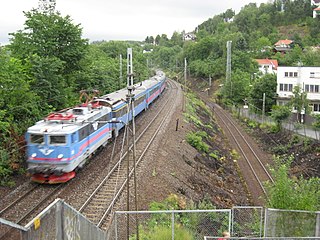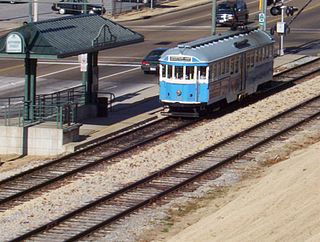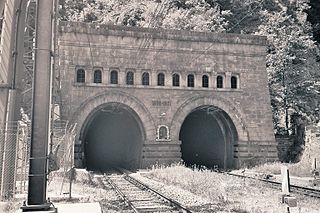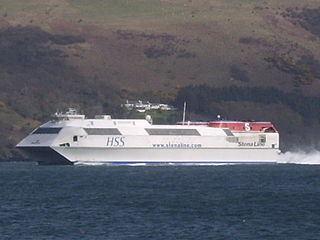
Containerization is a system of intermodal freight transport using intermodal containers. Containerization, also referred as container stuffing or container loading, is the process of unitization of cargoes in exports. Containerization is the predominant form of unitization of export cargoes, as opposed to other systems such as the barge system or palletization. The containers have standardized dimensions. They can be loaded and unloaded, stacked, transported efficiently over long distances, and transferred from one mode of transport to another—container ships, rail transport flatcars, and semi-trailer trucks—without being opened. The handling system is mechanized so that all handling is done with cranes and special forklift trucks. All containers are numbered and tracked using computerized systems.

An intermodal container, often called a shipping container, or a freight container, (or simply “container”) is a large standardized container designed and built for intermodal freight transport, meaning these containers can be used across different modes of transport – such as from ships to trains to trucks – without unloading and reloading their cargo. Intermodal containers are primarily used to store and transport materials and products efficiently and securely in the global containerized intermodal freight transport system, but smaller numbers are in regional use as well. It is like a boxcar that does not have wheels. Based on size alone, up to 95% of intermodal containers comply with ISO standards, and can officially be called ISO containers. These containers are known by many names: cargo container, sea container, ocean container, container van or sea van, sea can or C can, or MILVAN, or SEAVAN. The term CONEX (Box) is a technically incorrect carry-over usage of the name of an important predecessor of the ISO containers: the much smaller steel CONEX boxes used by the U.S. Army.

Intermodal freight transport involves the transportation of freight in an intermodal container or vehicle, using multiple modes of transportation, without any handling of the freight itself when changing modes. The method reduces cargo handling, and so improves security, reduces damage and loss, and allows freight to be transported faster. Reduced costs over road trucking is the key benefit for inter-continental use. This may be offset by reduced timings for road transport over shorter distances.

In transportation, freight refers to goods conveyed by land, water or air, while cargo refers specifically to freight when conveyed via water or air. In economics, freight refers to goods transported at a freight rate for commercial gain. The term cargo is also used in case of goods in the cold-chain, because the perishable inventory is always in transit towards a final end-use, even when it is held in cold storage or other similar climate-controlled facilities, including warehouses.

The Adelaide–Darwin rail corridor consists of the 2975-kilometre (1849-mile) long 1435 mm standard-gauge main line between the South Australian capital city of Adelaide and the Northern Territory capital of Darwin, and the lines immediately connected to it. Preceded by a number of other shorter railways, a transcontinental line through to Darwin was only fully realised in 2004, when the final link from Alice Springs was opened. The line is used by interstate freight trains operated by Aurizon and by The Ghan passenger train operated by Journey Beyond.

The Port of Miami, styled as PortMiami and formally known as the Dante B. Fascell Port of Miami, is a major seaport located in Biscayne Bay at the mouth of the Miami River in Miami, Florida. It is the largest passenger port in the world and one of the largest cargo ports in the United States.

Less-than-truckload shipping or less than load (LTL) is the transportation of an amount of freight sized between individual parcels and full truckloads. Parcel carriers handle small packages and freight that can be broken down into units less than approximately 150 pounds (68 kg). Full truckload carriers move entire semi-trailers. Semi-trailers are typically between 26 and 53 feet and require a substantial amount of freight to make such transportation economical. The term LTL can refer to the freight itself, or to the carrier that transports the such freight.

CargoNet AS is the primary operator of freight trains on the Norwegian railway system.

SBB Cargo is a subsidiary of Swiss Federal Railways (SBB) specialising in railfreight and is operated as the Freight division. Swiss Federal Railways is a former state-owned and -controlled company that was transformed in 1999 into a joint-stock company under special legislation following the first Swiss railway reform and divided up into three independent divisions: Passenger, Freight and Infrastructure. The headquarters of Swiss Federal Railways SBB Cargo AG, the Freight division's official designation, are in Olten. In 2013, SBB Cargo had 3,061 employees and achieved consolidated sales of CHF 953 million. In Switzerland, SBB Cargo is the market leader in rail freight, transporting over 175,000 tons of goods every day. This corresponds to the weight of 425 fully loaded jumbo jets.

The Perpignan–Barcelona high-speed line is an international high-speed rail line between Perpignan in Roussillon, France and Barcelona, Spain. The line consists of a 175.5-kilometre (109.1 mi) railway, of which 24.6 km (15.3 mi) are in France and 150.8 km (93.7 mi) are in Spain. The line is sometimes referenced as an extension of the Madrid–Barcelona high-speed rail line. The Perpignan–Barcelona line is a part of the Mediterranean Corridor.

Rail transport in Lithuania consists of freight shipments and passenger services. The construction of the first railway line in Lithuania began in 1859. As of 2021, the total length of railways in Lithuania was 1,868.8 km (1,161.2 mi). Lietuvos Geležinkeliai, the national state-owned railway company, operates most of the passenger and freight services.
Lorry-Rail is a rolling highway operator. Its mission consists of developing, promoting and marketing the new 1050 km rail-road service from Bettembourg, Luxembourg to le Boulou near Perpignan, France, for standard unaccompanied semi-trailers. It uses Modalohr piggyback wagons.

The Loenga–Alnabru Line is a 7.3-kilometer (4.5 mi) freight-only railway line in Oslo, Norway. It runs from the classification yard at Loenga(Norway) to Alnabru Freight Terminal, typically serving twenty trains per day. It allows trains to pass from the Østfold Line to Alnabru without passing via Oslo Central Station. It is also used by freight trains from the Sørlandet Line, which run via the Oslo Tunnel and cross over at Bryn Station. It is notorious for the steep hill Brynsbakken which it has to climb, giving it a gradient of 2.6 percent.

In rail transportation, a rolling highway or rolling road is a form of combined transport involving the conveying of road trucks by rail, referred to as Ro-La trains. The concept is a form of piggyback transportation.

Memphis, Tennessee has developed into a major Mid-American commercial and transportation hub because of its location on the Mississippi River and a convergence of numerous rail and highway links. Four rail and highway bridges cross the Mississippi River at Memphis. In addition, Memphis International Airport has become the world's largest airfreight terminal.

The Domodossola–Milan railway line is a major Italian railway route and an important part of the European rail network. It is one of Italy's busiest lines for both passenger and freight trains. The line connects Milan and Domodossola with Brig, an important Swiss railway junction, via the Simplon Tunnel. Direct passenger trains ran from Brig to Paris and Brussels and Luxembourg via Basel. The line runs through lower Varese Province, the valley of Ossola and along the shore of Lake Maggiore.

Accompanied combined transport is a form of intermodal transport, which is the movement of goods in one and the same loading unit or road vehicle, using successively two or more modes of transport without handling the goods themselves in changing modes. More specifically, accompanied combined transport is one of the two types of combined transport, which is intermodal transport where the major part of the journey is by rail, inland waterways or sea, and any initial and/or final legs carried out by road are as short as possible.

The Domodossola–Locarno railway line, informally called the Centovallina in Switzerland and the Vigezzina in Italy, is a metre-gauge railway negotiating the dramatic mountainous terrain between Domodossola, Italy, and Locarno, Switzerland. It passes through the Vigezzo Valley and Centovalli.

Toll Domestic Forwarding (TDF) is a division of the Toll Group specialising in freight forwarding by road, rail and sea within and between Australia and New Zealand.

Intermodal railfreight in Great Britain is a way of transporting containers between ports, inland ports and terminals in England, Scotland and Wales, by using rail to do so. Initially started by British Rail in the 1960s, the use of containers that could be swapped between different modes of transport goes back to the days of the London, Midland & Scottish Railway.

























